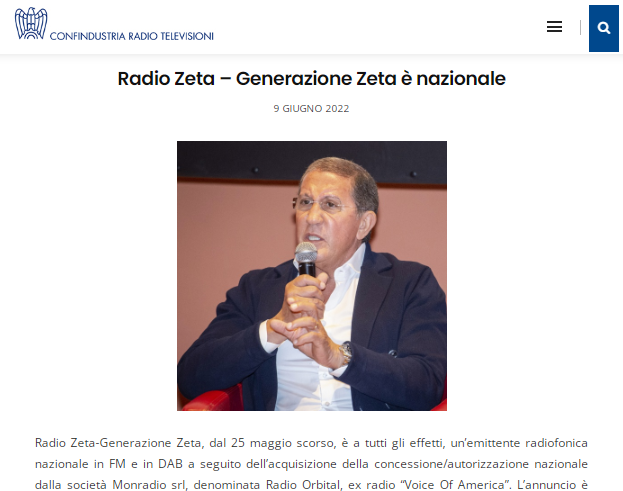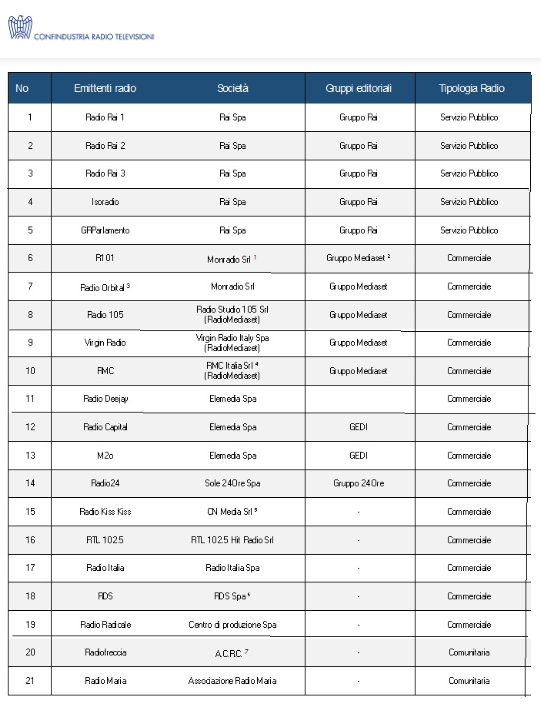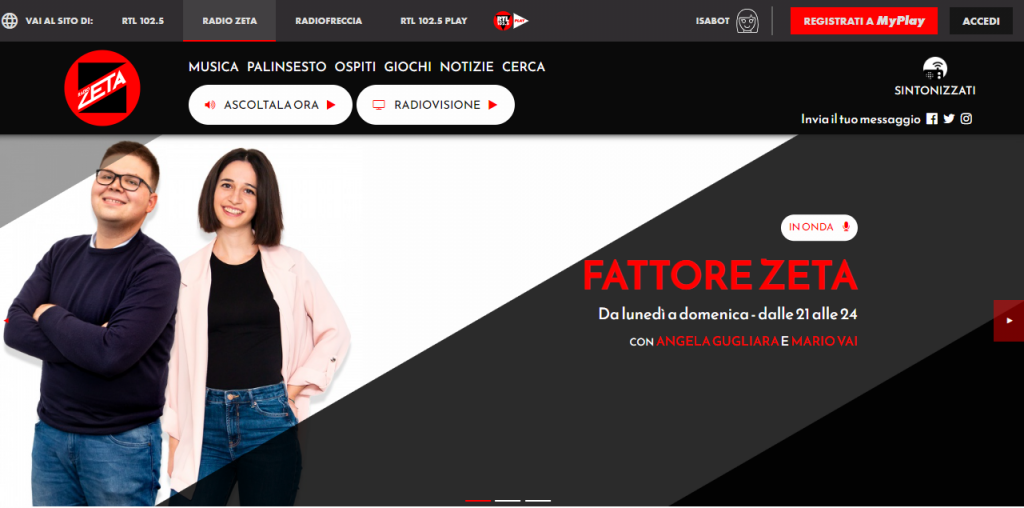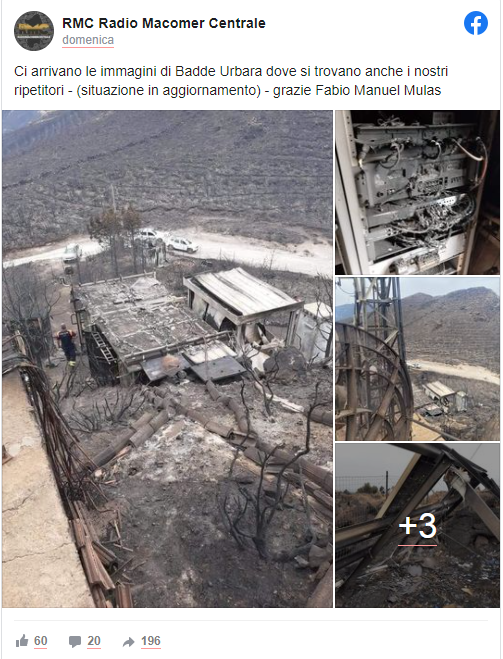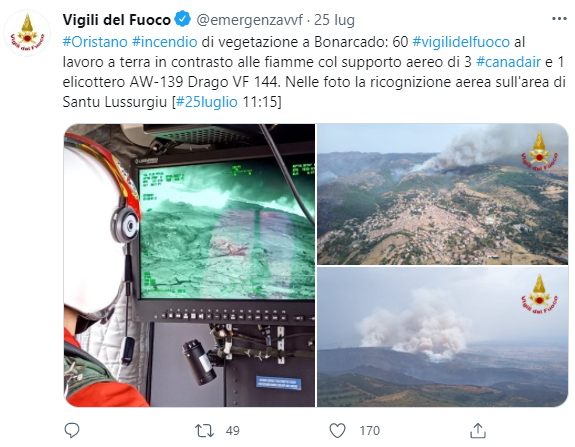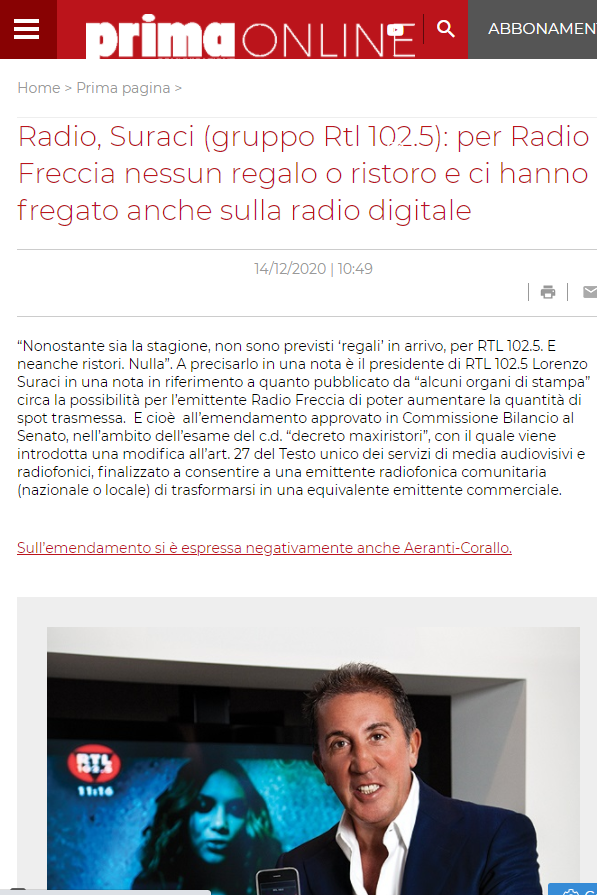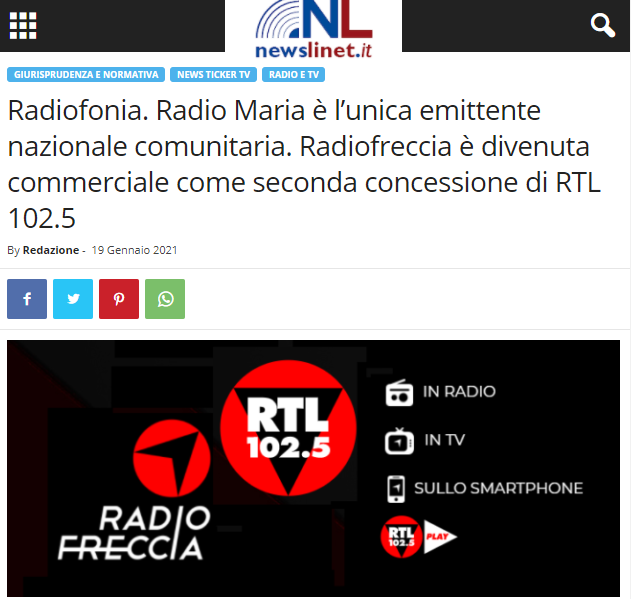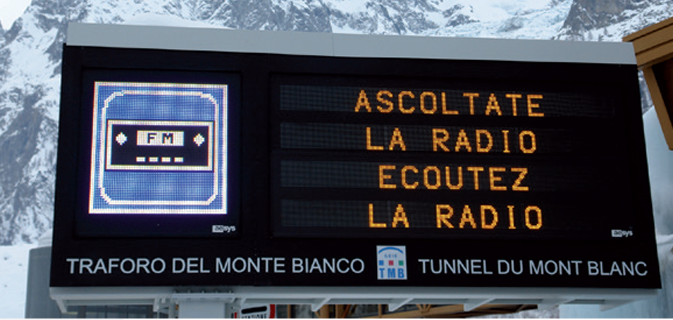
Source
We drove through the Mont Blanc tunnel in both directions to check what stations are being received: on the Italian website of TMB, the company that operates the tunnel, the list is not available, while on the French version it was removed a few months ago. There are 12 frequencies, two of which are reserved for info traffic channels (Autoroute Info and RAI Isoradio) and ten for public and private broadcasters in the two countries. France prevails, with three public networks (France Inter, France Musique, and the regional France Bleu Savoie) and three from the main commercial networks (Europe 1, Fun Radio, NRJ). The Italians, on the other hand, number four: one public network (RAI Radio2), two private networks (Radio 105 and RMC – Radio Monte Carlo), and the Piedmont regional station GRP (Giornale Radio Piemonte).
All frequencies
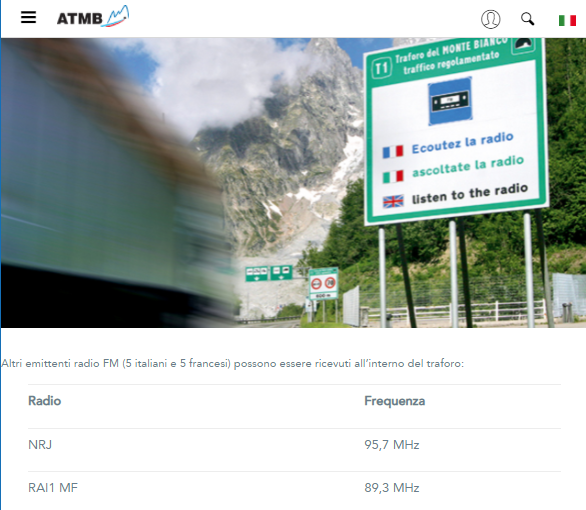
Source
Here is the list sorted by frequency of the stations that can be received by driving through the Mont Blanc Tunnel. Compared to what was indicated on the website, which divided them equally (5 and 5 between the two nations) there are now six French radio stations. There is no longer a trace of Rai Radio1 on 89.3.
88.7 RMC – Radio Monte Carlo (Italia)
89.6 NRJ
91.0 France Inter
91.9 RAI Radio2
94.7 France Musique
99.0 105
100.0 Fun Radio
103.3 Isoradio Rai
103.6 France Bleu Savoie
104.4 Europe 1
107.7 Autoroute Info
Every six minutes an emergency message
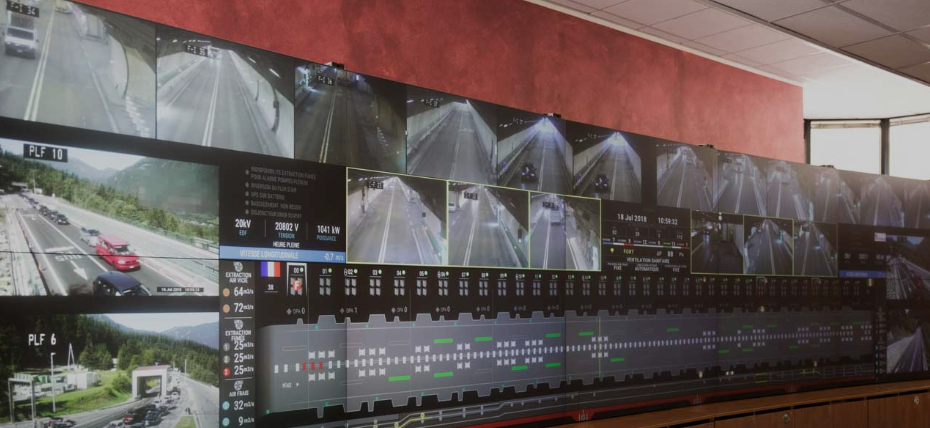
Source
On the Italy side approach route and inside the tunnel, one can listen to RAI’s commercial-free public service channel Isoradio 103.3, with traffic information and live links to CCISS Viaggiare Informati and Autostrade per l’Italia’s Multimedia Center. On the French side and inside the tunnel, traffic news is broadcast by Infotrafic 107.7. During transit, drivers are asked to stay tuned to FM frequencies because a reminder message in three languages (Italian, French, and English) about compliance with the main traffic rules in the tunnel is aired every 6 minutes on all channels. For security reasons, information about behavior in the case of an event or emergency is broadcast.

